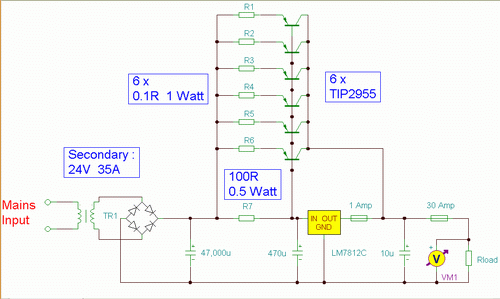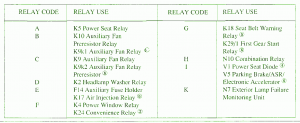
Using the simple flashlight remote control circuit shown in Fig. 1, one can switch almost any domestic electrical equipment from a distance, simply by flashing a torchlight. The basic sensor used in this remote switching mechanism - is a light dependent resistor (LDR), whose resistance value changes in response to the incident light. The 555 timer is used in the monostable mode in Fig. 1, which is triggered when the voltage at its pin 2 falls below l/3 Vcc. This triggering takes place when light is incident on the LDR, thus lowering its resistance value. The l0k pot VRI is used for setting up the triggering threshold.
The output time period of the 555 is adjustable up to l2 seconds by varying the 500k pot VR2, so as to smooth up the light impulse (similar to switch debouncing); The output of the 555 is fed to the input ofa JK master/slave flip-flop (7473) which is configured in the toggle mode (by tying the J and K inputs to Vcc). ln the toggle mode, the output of the flip-flop changes state with every pulse at its clock input. The output of the 7473 feeds an amplifier stage comprising a BC 148 and a SLl00 transistor which are used to drive a relay that switches the instrument to be controlled. The circuit can be mounted on a small veroboard and placed in a cabinet with a small hole for exposing the LDR. Care should be taken to ensure that the LDR receives only the light from the torch, and that no ambient light falls on it. Once so installed, it will work reliably, with no false triggering that sometimes occurs in sound operated remote control units.
The entire digram for the flashight controlled remote circuit is shown below:





















 Our solution is based on the howlround or feedback effect all too familiar to sound engineers. This effect, which appears as a more or less violent squealing, occurs when a microphone picks up sound from speakers that are connected to it via an amplifier. Feeding back the output signal from the speaker into the input (the microphone) in this way creates an acoustic oscillator. Our detector works on the same principle, except that the microphone is an ultrasound receiver while the speaker is an ultrasonic emitter. They are linked just by a very easily-built ordinary amplifier. Feedback from the output to the input occurs only when the ultrasonic beam is reflected off the obstacle we are trying to detect.
Our solution is based on the howlround or feedback effect all too familiar to sound engineers. This effect, which appears as a more or less violent squealing, occurs when a microphone picks up sound from speakers that are connected to it via an amplifier. Feeding back the output signal from the speaker into the input (the microphone) in this way creates an acoustic oscillator. Our detector works on the same principle, except that the microphone is an ultrasound receiver while the speaker is an ultrasonic emitter. They are linked just by a very easily-built ordinary amplifier. Feedback from the output to the input occurs only when the ultrasonic beam is reflected off the obstacle we are trying to detect.


 The common telephone line is simply a copper pair, ie, two wires. As mentioned, there is usually a 48V DC bias across the pair which drops to around 8V when a telephone is “off-hook”. The ring voltage (around 90V AC) and the audio signal voltage (also AC) are overlaid on this DC bias. The DC power is “rectified” by each telephone on that line to run its own circuitry. Note, though, that this does not include cordless phones which usually use a plugpack, as their power requirements are far in excess of what the telephone line can deliver. (As an aside, that is the reason it is important to keep a line-powered telephone in your home so you can still make and receive calls if the mains power goes out.
The common telephone line is simply a copper pair, ie, two wires. As mentioned, there is usually a 48V DC bias across the pair which drops to around 8V when a telephone is “off-hook”. The ring voltage (around 90V AC) and the audio signal voltage (also AC) are overlaid on this DC bias. The DC power is “rectified” by each telephone on that line to run its own circuitry. Note, though, that this does not include cordless phones which usually use a plugpack, as their power requirements are far in excess of what the telephone line can deliver. (As an aside, that is the reason it is important to keep a line-powered telephone in your home so you can still make and receive calls if the mains power goes out. Telephone exchanges can usually supply power from their backup batteries for up to some days, even if they are blacked out). Usually, telephone lines are run with 4-core cable. This allows up to two lines on the one cable. The first line is on the inner pair (pins 2 and 3) and the second line, if present, is on the outer pair (pins 1 and 4). Modern telephones use modular plugs, specifically RJ11 (6P2C, one line), RJ14 (6P4C, one or two lines) or RJ25 (6P6C, 1-3 lines). By the way, 6P4C stands for “six pins, four connectors”. Incidentally, “RJ12” connectors are physically compatible – and commonly available – so that is what we have used in this project.
Telephone exchanges can usually supply power from their backup batteries for up to some days, even if they are blacked out). Usually, telephone lines are run with 4-core cable. This allows up to two lines on the one cable. The first line is on the inner pair (pins 2 and 3) and the second line, if present, is on the outer pair (pins 1 and 4). Modern telephones use modular plugs, specifically RJ11 (6P2C, one line), RJ14 (6P4C, one or two lines) or RJ25 (6P6C, 1-3 lines). By the way, 6P4C stands for “six pins, four connectors”. Incidentally, “RJ12” connectors are physically compatible – and commonly available – so that is what we have used in this project. Because modern phones rectify the DC voltage from the telephone lines before regulating it and because the ring and voice signals are AC, for voice communications the polarity doesn’t really matter.
Because modern phones rectify the DC voltage from the telephone lines before regulating it and because the ring and voice signals are AC, for voice communications the polarity doesn’t really matter. 



